

News
It's all happening.
News
It's all happening.
Romantic Works of Tchaikovsky, Schumann and Casals Sing in the Hands of Cellist Bion Tsang in CANTABILE, a New Album for Cello and Orchestra Now Available Worldwide from Universal Music Group
April 14th, 2023
CANTABILE's Schumann Cello Concerto also featured in Season 4 of PBS Great Performances NOW HEAR THIS, episode premiering April 14
AUSTIN, Texas — In his newest release, cellist Bion Tsang returns to Glasgow, Scotland for his second recording with the Royal Scottish National Orchestra and conductor Scott Yoo. CANTABILE, available from Universal Music Group on digital platforms April 14 and on CD in May 2023, features two works by Tchaikovsky, Variations on a Rococo Theme (Op. 33) and Andante Cantabile (Op. 11), and Schumann's Cello Concerto, bookended by two renditions of Pablo Casals' "Song of the Birds."
CANTABILE opens with Casals' "Song of the Birds" for cello and orchestra, setting an intention for the album's romantic arc. The mood lifts with the elegant and virtuosic Variations on a Rococo Theme of Tchaikovsky, which is followed by the heart-wrenching Schumann Cello Concerto. The beloved, lyrical Andante Cantabile by Tchaikovksy and Tsang's own arrangement for unaccompanied cello of "Song of the Birds" complete the album.
The making of Tsang's album appears in Season 4 of PBS Great Performances NOW HEAR THIS, an episode devoted to exploring Schumann's mental health and creativity. Tsang and Yoo are seen discussing the alterations made to Schumann's manuscript of the Cello Concerto, which they feel ultimately changed the emotional concept of the original work. NOW HEAR THIS episode "Schumann: Genius and Madness" premieres April 14 worldwide on PBS (check local listings).
"I am so thrilled to have these two projects release simultaneously," says Tsang. "It was such a joy to once again collaborate with Scott Yoo and the RSNO. With the addition of Harry Lynch and the NHT crew, we were able to delve more deeply into Schumann's own experience and his possible motivations in composing the cello concerto."
"My father, Paul Ja-Min Tsang, aspired to be a singer," says Michigan-born Tsang, who dedicated CANTABILE to his father's memory. "Born in Shanghai, raised in the Fujian province in the 1940s and Taiwan in the 1950s, he was steered towards science and not afforded that opportunity.
"From my first concerto performance in 1979, he supported me to become a concert cellist. I'm grateful that he lived to see my dreams come true before his death in 1998. My dad loved the cello for its singing voice and always encouraged me to find my voice as a musician."
Produced by Michael Fine, CANTABILE is distributed by Universal Music Group and available everywhere digital music is distributed including Apple Music, Spotify and Google Music.
BION TSANG APPEARS IN PBS Great Performances: Now Hear This “Schumann: Genius and Madness”
April 14th, 2023
In Series 4 Episode 2 of Great Performances: Now Hear This, visit Germany, France and Scotland with host Scott Yoo as he investigates the connection between Robert Schumann’s creative genius and bipolar disorder with the help of the world’s only Juilliard-trained concert pianist, Schumann expert, and psychiatrist, Dr. Richard Kogan. Yoo also attempts to record the composer’s famed cello concerto and bring forth the emotion in Schumann’s writing with cellist Bion Tsang and the Royal Scottish National Orchestra. Traveling to France and Scotland, Yoo also meets with experts studying the mental struggles of other artists such as painter Vincent Van Gogh and poet Robert Burns at locations inspirational to them, such as Van Gogh’s Place du Forum featured in one of his paintings. In an exploration through the works and minds of these artists, Yoo shines a light on the significance of artistic expression.
Great Performances: Now Hear This “Schumann: Genius and Madness” premieres Friday, April 14, 2023, at 9 p.m. ET on PBS (check local listings), pbs.org/nowhearthis and the PBS Video app.
BION TSANG APPEARS IN PBS Great Performances: Now Hear This “Beethoven’s Ghost”
October 29th, 2021
The Series 2 finale of Great Performances: Now Hear This takes a dramatic approach to interpreting the complex musical mind of composer Ludwig van Beethoven, who wrote nearly 800 works in 45 years. Host and violinist Scott Yoo and his team of fellow musicians, including Anna Polonsky (piano), Bion Tsang (cello), Toby Appel (viola) and Emily Daggett Smith (second violin), visit a historic manor in the Berkshires to better understand Beethoven by performing and recording some of his most personal work, including his famous “Ghost Trio.” Unbeknownst to them, they’ve summoned the ghost of the composer, trailed by the spirit of Sigmund Freud who attempts to analyze him. Interweaving documentary, performance and theatrical storytelling, this haunting special episode explores the mind of the composer through dramatized conversations between the spirits of Beethoven and Freud.
Great Performances: Now Hear This “Beethoven’s Ghost” premieres Friday, October 29, 2021, at 9 p.m. ET on PBS (check local listings), pbs.org/nowhearthis and the PBS Video app for Halloween.
Sony Classical Releases Bion Tsang's Rendition of Bach's Cello Suites Featuring Rare 1713 "Bass of Spain" Strad
July 6th, 2021
Available Now
Stream now on Amazon Music, Apple Music, IDAGIO and Spotify
AUSTIN, Texas — A new recording Bion Tsang: Bach Cello Suites from Sony Classical combines the artistry of the remarkable cellist Bion Tsang with the exquisite sonority of a rarely heard Stradivari cello. Tsang's Bach Suites follow the success of his Dvorak/Enescu Cello Concertos with Scott Yoo and the Royal Scottish National Orchestra (2019), also from Sony Classical. Tsang recorded the Six Suites for Violoncello Solo by Johann Sebastian Bach in Bastyr Chapel, Seattle, on the 1713 "Bass of Spain" Antonio Stradivari cello.
"I am so very grateful to David Fulton for lending me his priceless cello to record the Bach Suites," Tsang says. "As every cellist knows, this set of Suites represents the pinnacle of our solo literature, and the Bass of Spain allowed me total freedom to express the widest possible range of emotions in these monumental works. It's incredible to think that Strad made this instrument in the same decade that Bach craftedthese masterpieces."
The complete set of Six Suites for Violoncello Solo, composed by Bach between 1717 and 1723, weren't heard in public until the legendary Pablo Casals performed and recorded them two centuries later. The Cello Suites have since become an indispensable part of the cello literature, adapted for numerous other instruments and widely considered to be amongst the greatest and most influential works of Bach's considerable musical output.
Bion Tsang: Bach Cello Suites expands Tsang's esteemed discography, which includes three live concert recordings from Jordan Hall, Boston: the complete Beethoven Sonatas and Variations for Cello and Piano with Anton Nel (Artek); the Brahms Cello Sonatas and 4 Hungarian Dances with Anton Nel (Artek); and a recital of cello sonatas by Britten, Dohnanyi and Grieg with Adam Neiman(BHM). Tsang also released The Blue Rock Sessions (BHM), a collection of 18 virtuoso miniatures, a culmination of Tsang's lifelong fascination with the violin repertoire and the musicality and intimacy of miniature compositions.
Bion Tsang: Bach Cello Suites is distributed worldwide via Sony Classical and is available at Amazon Music, Apple Music, IDAGIO and Spotify.
Bion Tsang explores the lines between Dvorak and Enescu Cello Concertos in new Sony Classical release with Scott Yoo and the Royal Scottish National Orchestra
July 10th, 2019
AUSTIN, TEXAS — A new recording from Sony Classical pairs two concertos for cello and orchestra in the hands of award-winning cellist Bion Tsang with conductor Scott Yoo and the Royal Scottish National Orchestra. Produced by Michael Fine, Bion Tsang: Dvorak/Enescu Cello Concertos puts an exclamation point on the cellist’s intrepid four-decade career.
Tsang gave the United States premiere of George Enescu’s Symphonie Concertante, Op. 8, with the American Symphony Orchestra at Avery Fisher Hall, Lincoln Center, in 2000. He immediately fell in love with the work, finding in it many similarities to his long-time favorite concerto, the much-celebrated Dvorak b minor, Op. 104. “Each of these concertos takes the listener on an epic journey,” says Tsang. “They are both gloriously lush and dramatic in their orchestration, and the cello sings above this backdrop with intense emotion. In both pieces, I feel there are distinct depictions of longing, searching, struggle, and finally triumph!” Tsang is at home in this dramatic role, according to Edith Eisler of Strings magazine. Upon hearing his performance she remarked, “His changes of mood and character have perfect poise, and his rhythmic command is uncanny; melodic lines soar in long arches, and cross-rhythms seem as natural as speech. I felt I was in the presence of a powerful inner impulse translated into sound with sovereign technical control.”
Bion Tsang: Dvorak/Enescu Cello Concertos is distributed worldwide via Sony Classical.
NEW RELEASE!
August 31st, 2018
Available now on Amazon, iTunes and CD Baby...
The Violin Channel
January 11th, 2018
A Story of Passion
May 25th, 2017
During SXSW 2017, Bion Tsang helped Mazda USA film their promotional video A Story of Passion, now out on YouTube...
Highlights from the CD release party
April 1st, 2017
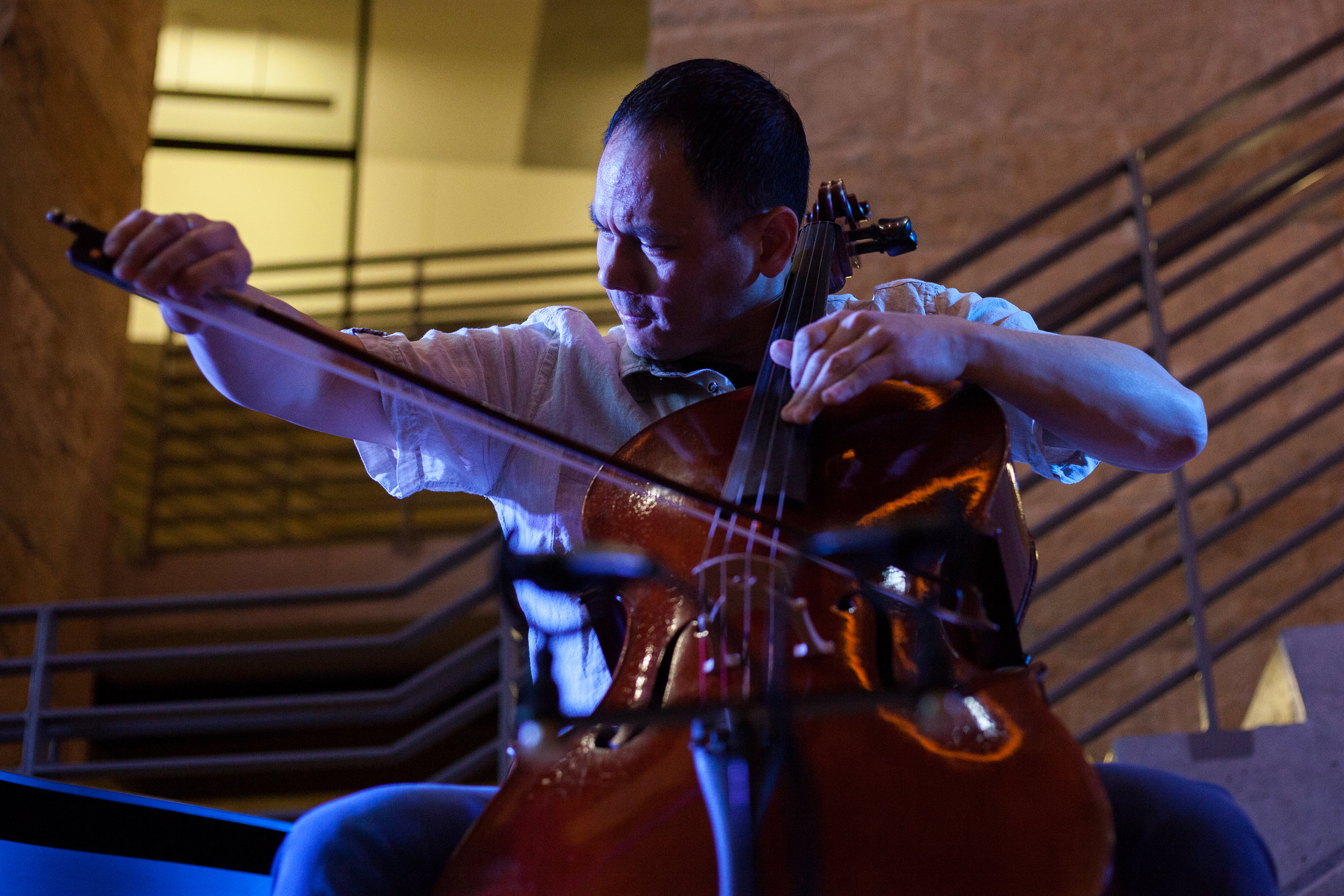
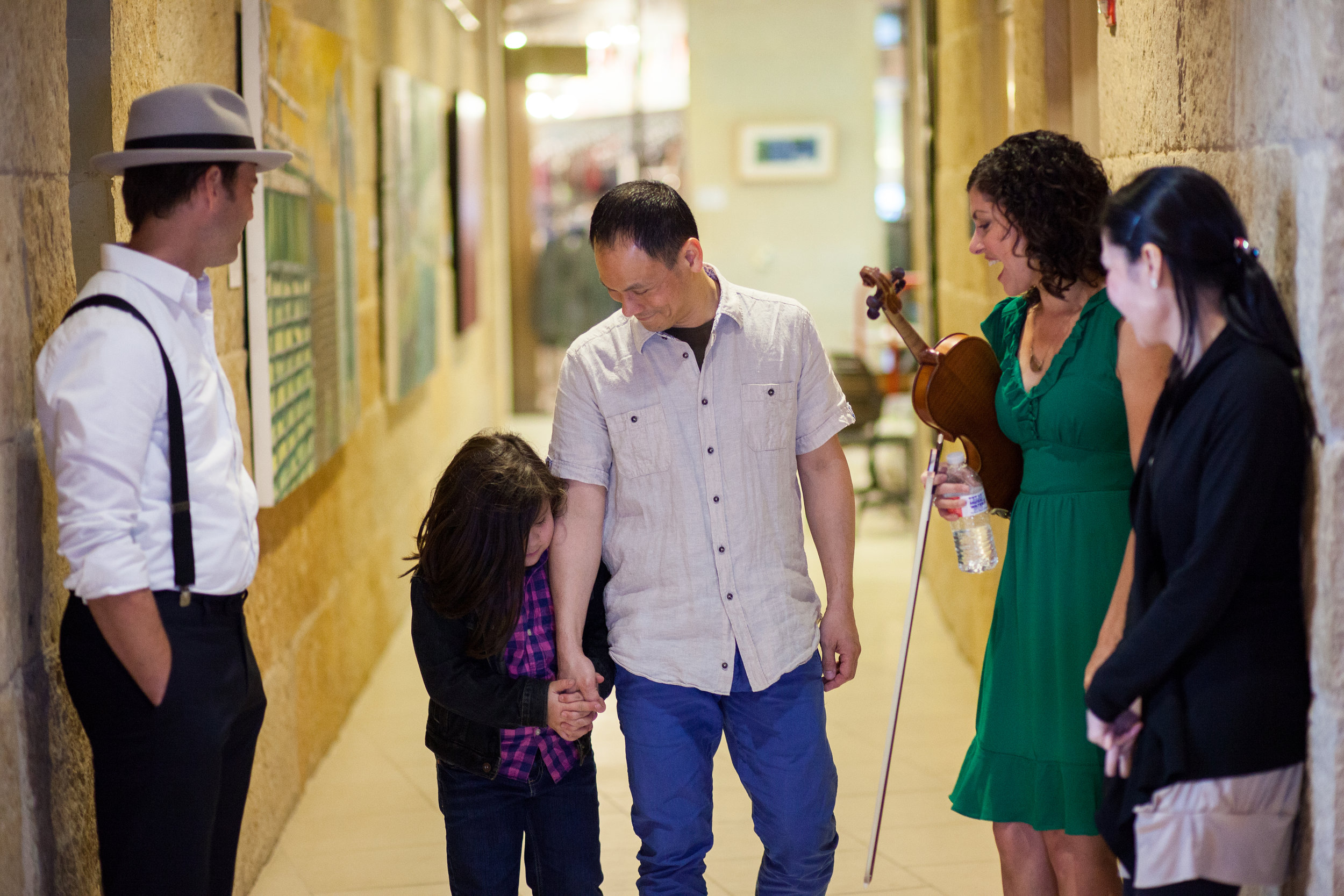
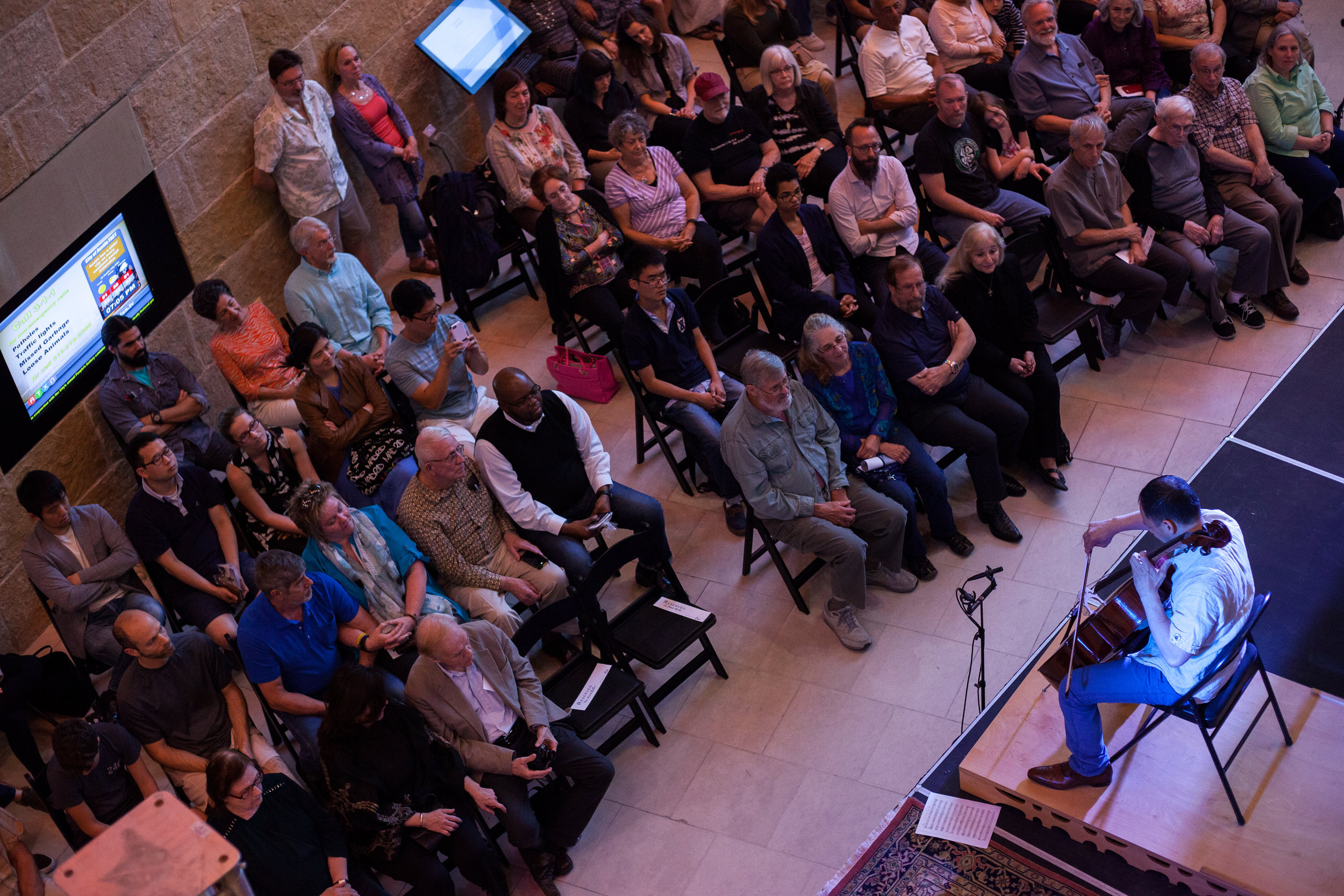
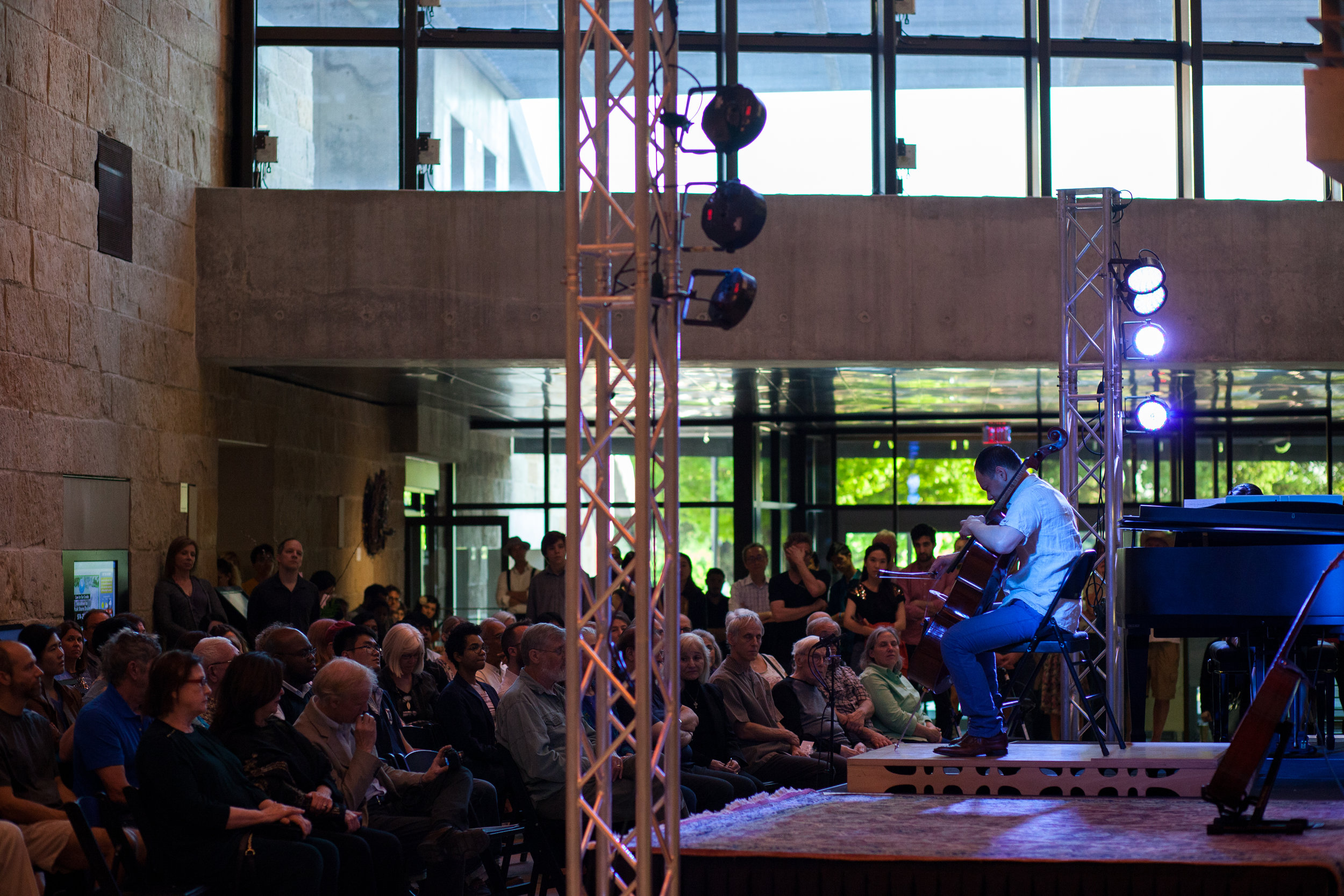
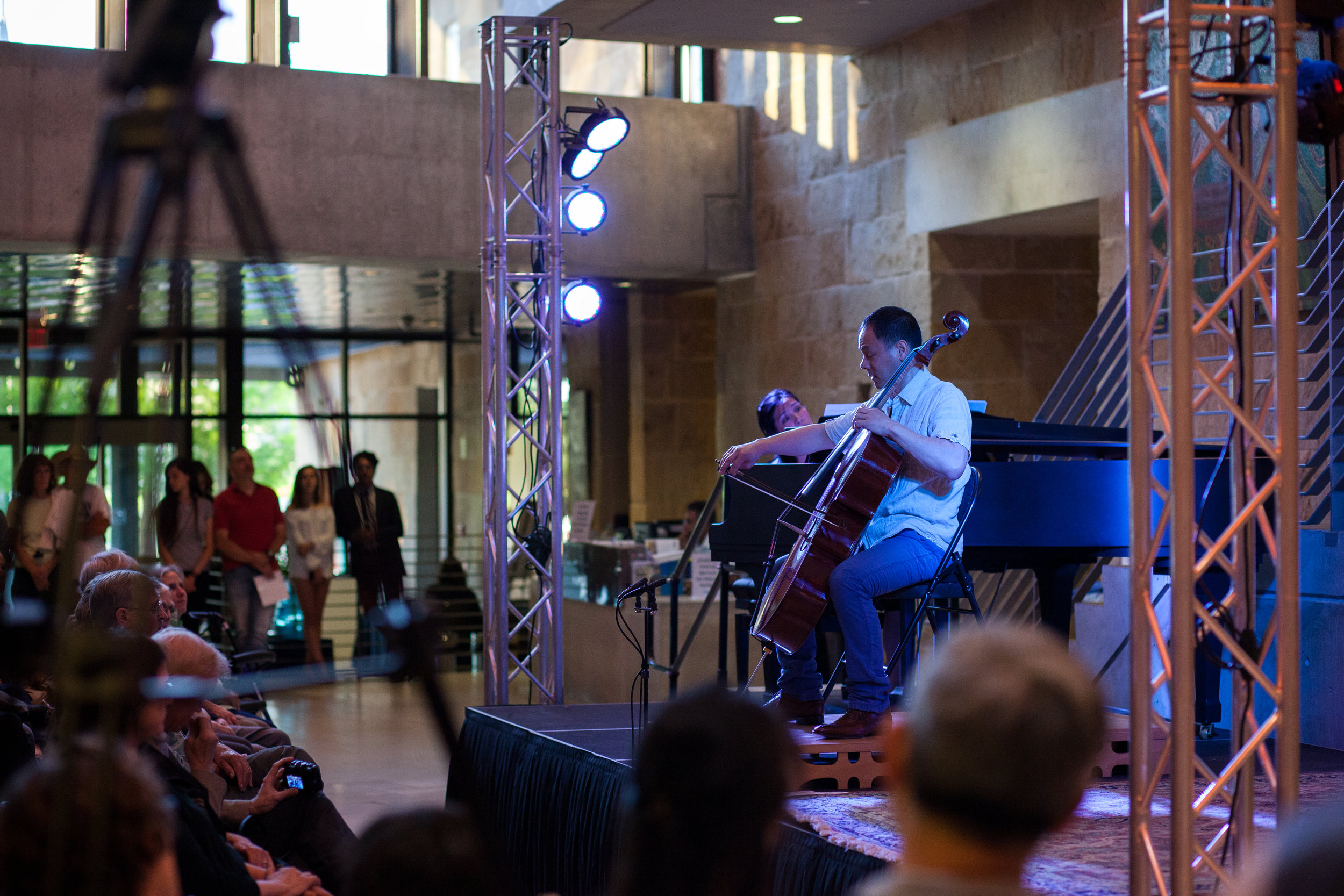
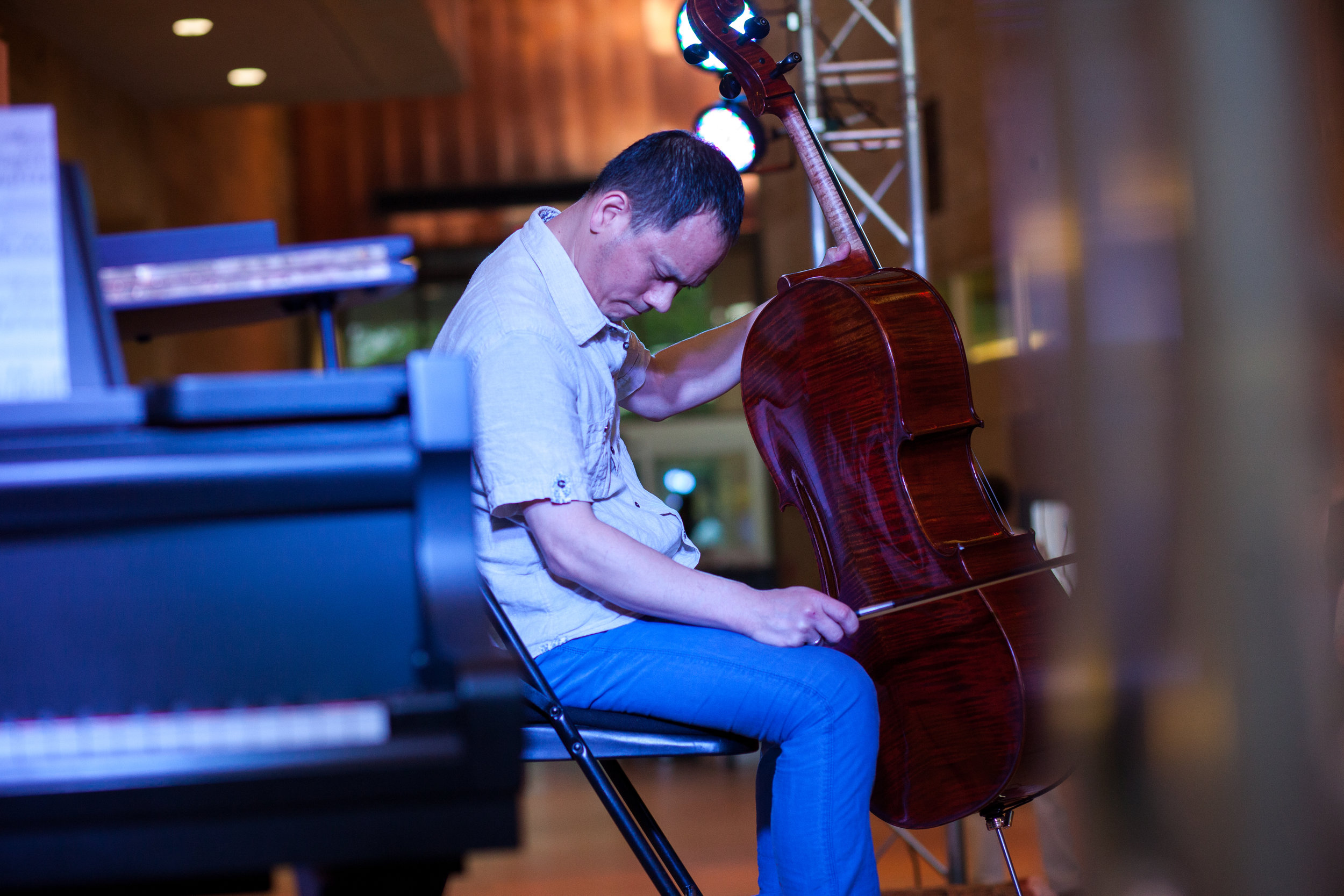
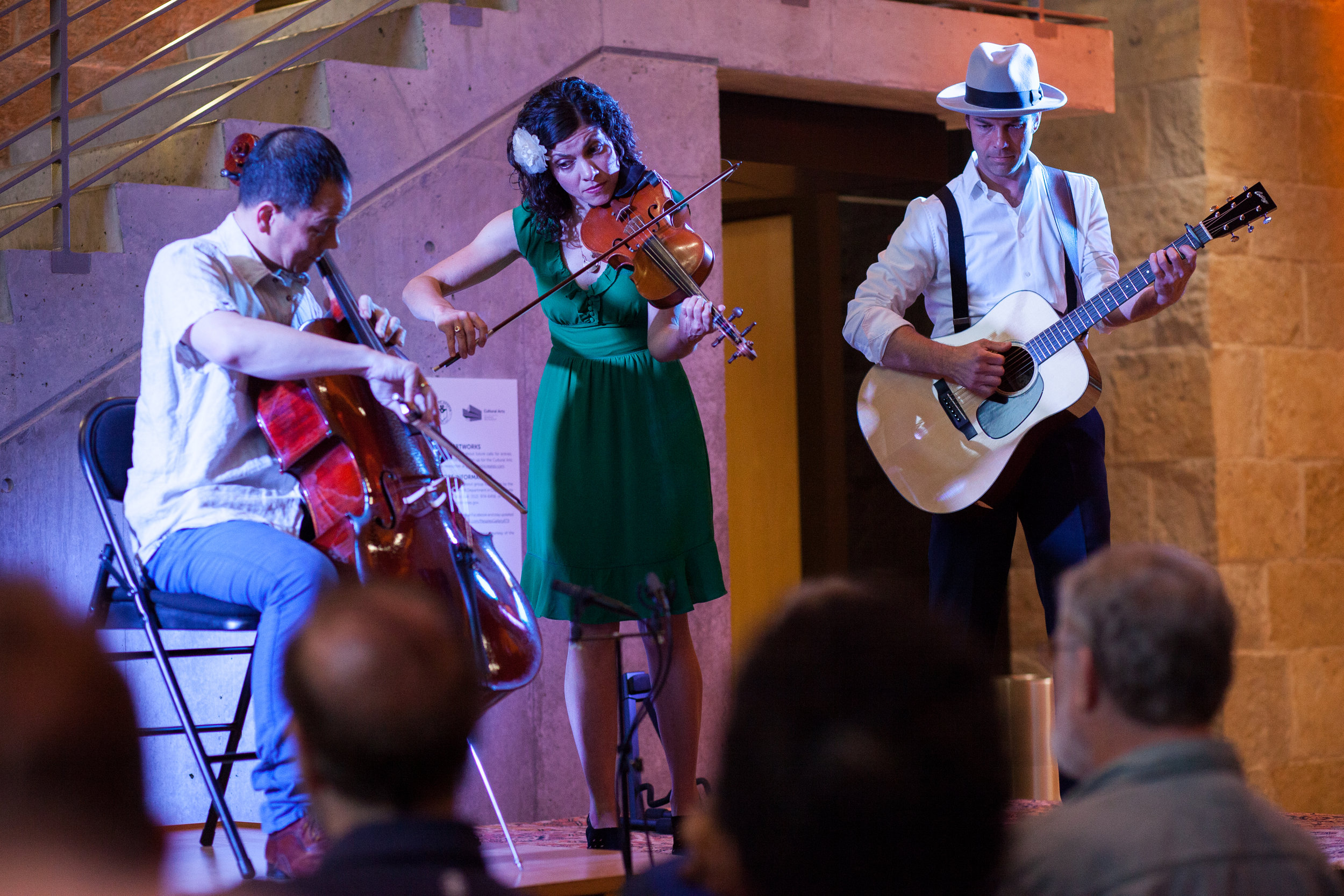

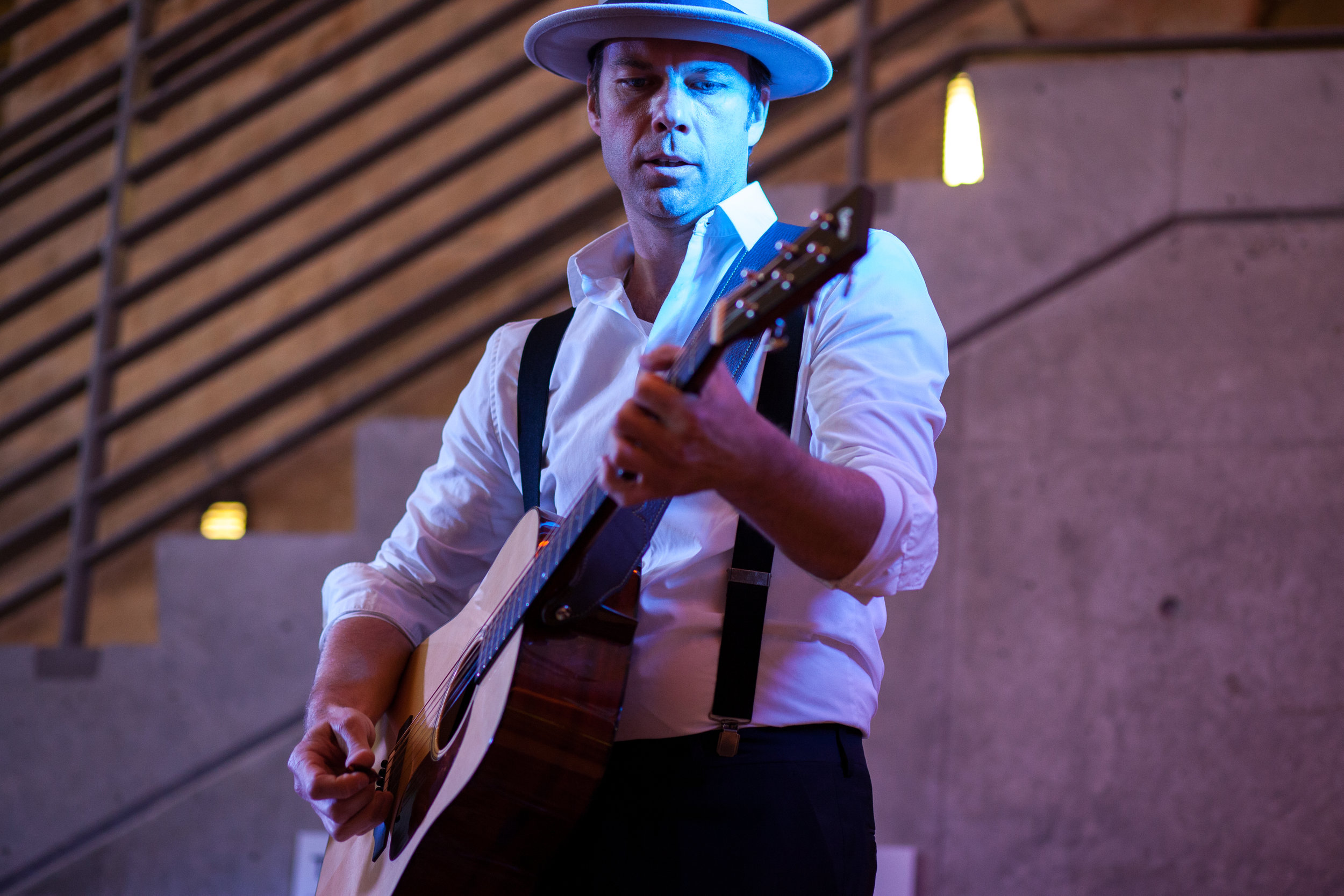
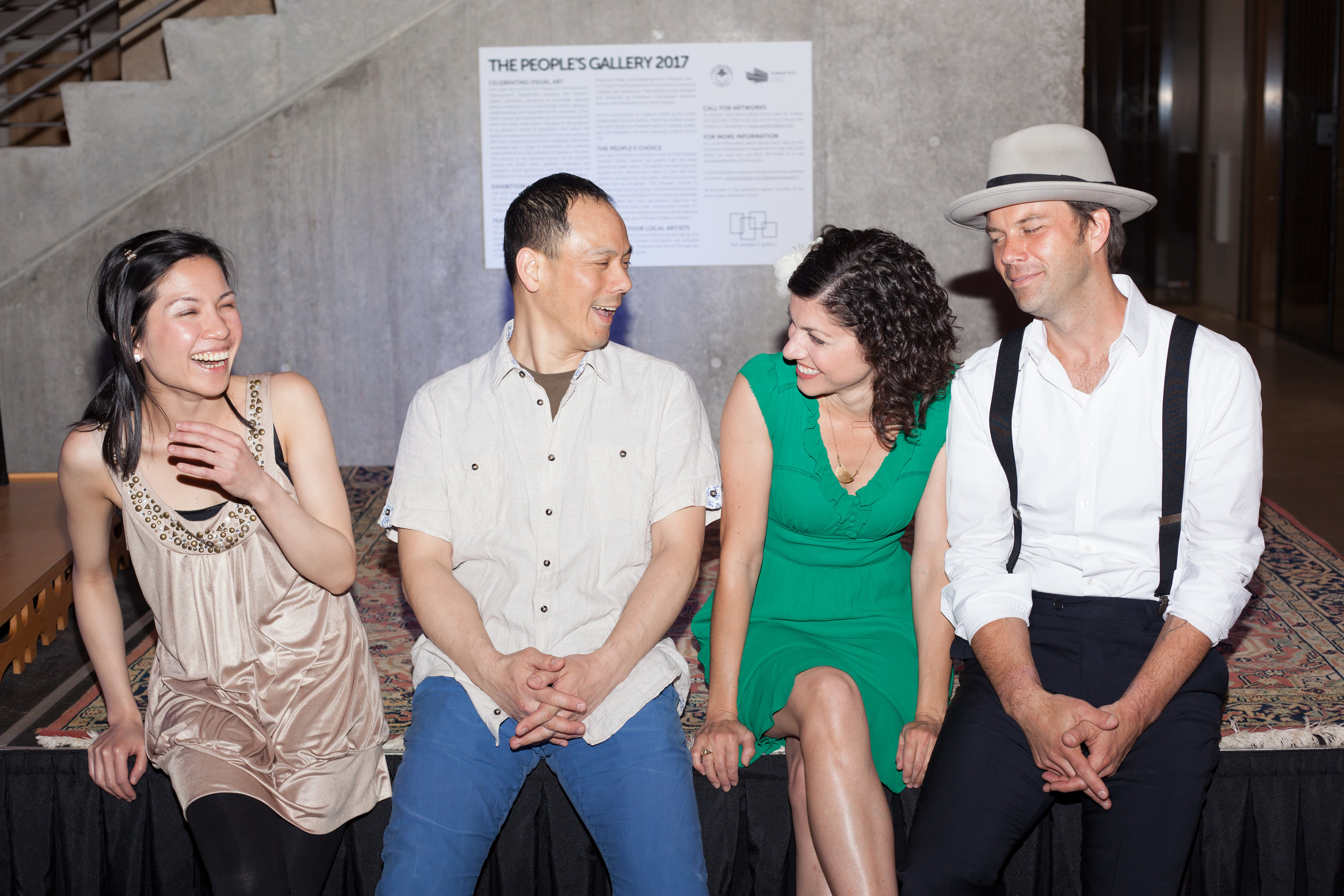
For the complete gallery of photos by Lawrence Peart from the Atrium of Austin City Hall, visit Made in Texas.
ROMANTIC, PLAYFUL VIRTUOSO MINIATURES IN BION TSANG: THE BLUE ROCK SESSIONS
March 10th, 2017
AUSTIN, TEXAS – Inspired by vintage recordings of strings giants Pablo Casals, Jascha Heifetz, Isaac Stern and more, Grammy-nominated cellist Bion Tsang presents eighteen virtuoso miniatures for cello and piano on Bion Tsang: The Blue Rock Sessions, now available on iTunes and Amazon.com, a culmination of Tsang’s lifelong fascination with the violin repertoire and the musicality and intimacy of miniature compositions such as Tchaikovsky’s “Melodié in E Flat” and Giovanni Sgambati’s “Serenata Napoletana.”
Tsang’s career began at age 11 when he made his solo debut with the New York Philharmonic under Zubin Mehta. He grew up with an ear for the virtuoso style that marked a “golden age” of string playing shaped by Casals, Heifeitz, Gregor Piatigorsky and others. Throughout his career, Tsang has polished showpieces and old chestnuts for encores including Antonín Dvořák’s “Humoresque” and Aram Khachaturian’s “Sabre Dance.”
Recorded with pianist Cecilia Lo-Chien Kao at Blue Rock Artist Ranch and Studio in Wimberley, Texas, Bion Tsang: The Blue Rock Sessions opens with “Humoresque,” followed by Gluck Melodie, and Camille Saint-Saëns’ The Swan before venturing into Falla’s Suite Populaire Espagnole and three works of Tchaikovsky. Rachmaninoff, Sgambati and Chopin lead to the triumphant finale, “Figaro,” a Concert-Rhapsodie on Rossini's "Barber of Seville” (Mario Castelnuovo-Tedesco), arranged by Tsang from a Heifetz score. Filmmaker Sam Roden directed videos for every performance on The Blue Rock Sessions, including a live action short film with animation for “Figaro” starring two of Tsang’s children in a tale of sibling rivalry.
In the liner notes for The Blue Rock Sessions, musician and radio host David Beck of Seattle, Wa., observes: “For a collection that so perfectly captures cello playing at the highest level, The Blue Rock Sessions contains very few pieces written originally for the instrument. Cellists have always had to be creative when it comes to finding pieces to play,” calling Tsang’s collection a “treasure trove of musical memories, interpretive insights, peerless pedagogy and deeply satisfying music making.”
Bion Tsang: The Blue Rock Sessions was made possible by support from the Foundation for Chinese Performing Arts.
The Boston Musical Intelligencer
January 26th, 2017
Tsang and Neiman Partner Effectively
by Cashman Kerr Prince
Saturday night the Foundation for Chinese Performing Arts brought cellist Bion Tsang and pianist Adam Neiman to Jordan Hall with a wonderfully innovative program.
Ernö Dohnányi’s took inspiration from Liszt and Brahms, and their influences are manifest in the Sonata in B-flat Major, op. 8 (1899), a virtuosic, taxing both cello and piano as it encompasses the scope of both symphony and concerto. The tessitura for cello sits awkwardly where neck and thumb positions meet. The great difficulty here, as in so much Romantic music for cello (I think especially of Chopin’s sonata), is in the pacing and dynamics; often played for loudness and declamation, the build in intensity peaks too soon and the performance can be unsatisfying. Tsang and Neiman navigated these shoals successfully, collaborating with grace and ease to present a subtle reading of this work that was softer and more ruminative in character from the start of the opening Allegro ma non troppo. The Scherzo seems a prefiguration of de Falla’s Ritual Fire Dance with its rapid shimmering sounds; the Trio section is more melodic, less intensely playful. The Adagio non troppo took on the nature of a berceuse and called to mind the third movement of Rachmaninoff’s cello sonata, before leading, attaca, into the Tema con variazioni finale. The form and the writing here recall Beethoven’s variations, but here with a jazzy edge. Each new iteration seemed Dohnányi’s response to the idiom of another composer. It was wonderful to hear this work which infrequently graces our concert halls, even though the writing seems more the product of a composer searching for his voice, and writing at a time when the cello is still finding its leading voice as a solo instrument. It is precisely this unsettling aspect of the sonata which makes it an important witness in the history of the form.
“By turns calm and excited, boisterous and bereft, stentorian and sexy, this is music capturing the plenitude of a life. The performers crafted a lovely home and shared it with us all here.”
From one foray into the creation of a musical language we turned to another: Benjamin Britten’s Sonata for Cello and Piano in C Major, op. 65. Britten knew his compositional voice, but seemed to struggle with capturing it in musical notation. Reading his works I am struck by the wealth of information on the page and feel as though I am learning to read all over again. Fortunately for all of us, Tsang and Neiman are more self-assured. This sonata opens with silence, which is just as important as the notes. The theme encompasses the full range of the cello. Tsang displayed a mesmerizing command of the lower dynamics and register of the cello in the five-movement sonata that seems also to take the form of a suite. The Dialogo (Allegro) opening establishes the interplay of equal voices between instruments, along with the oscillation between major and minor modalities. The humorous Scherzo-pizzicato recalls writing for the guitar. The Elegia builds from nothing to anguish, as the quiescence of death yields to rage against the dying light. Then that elegiac feeling, constant companion of all who have lost, returns. Marcia recalls the wry humor of Britten’s friend, Dmitri Shostakovich, notably with the glissandi harmonics at the end sounding an imitation of slide whistles. The concluding Moto perpetuo returnsto the pizzicato theme of the Scherzo, even as it becomes a study in dropping—dropping fingers on strings, bow on strings, in fleet and coordinated yet seemingly easy fashion. It is difficult not to hear the outsized and gruff personality of Rostropovich in this music—dedicatee, first performer, reference recorder with Britten at the keys. Tsang and Neiman made it their own in a highly effective reading.
The concert concluded with the evening’s most canonic work: Grieg’s Sonata in A Minor, op. 36. A traditional three-movement piece dedicated to his brother John, it captures the turmoil of the composer’s life circa 1882. The Allegro agitato opens in passion and angst, riffing on Norwegian folk music and incorporating his signature “Grieg motif” (C-B-G). The Andante molto tranquillo embraces pastoral calm and passionate drive, before a peaceful coda. A brief bridge leads into the concluding Allegro where once more traditional tunes vie with Romantic at music. Lately we hear a lot about hygge, the Scandinavian concept of cozy comfort, Heimlich in another clime. Grieg embraced this notion of music that is inhabitable rather than monumental. In this sonata, we hear the warmth, the comfort, the love of an amiable home and functional family. By turns calm and excited, boisterous and bereft, stentorian and sexy, this is music capturing the plenitude of a life. The performers crafted a lovely home and shared it with us all here.
Recalled to the stage, they treated us to the Ponce/Heifetz Estrellita as an encore.
I applaud the Foundation for Chinese Performing Arts for the coup in bringing Bion Tsang to Boston, and its prudence in the pairing him with his frequent collaborator Adam Neiman.












